WordPress Travel Map Plugin (CMMRM) - Settings - General
Settings - General
To configure general settings in the WordPress Travel Map plugin, navigate to the Admin Dashboard → CM Maps Route Manager Pro → Settings. Then click on the General tab.
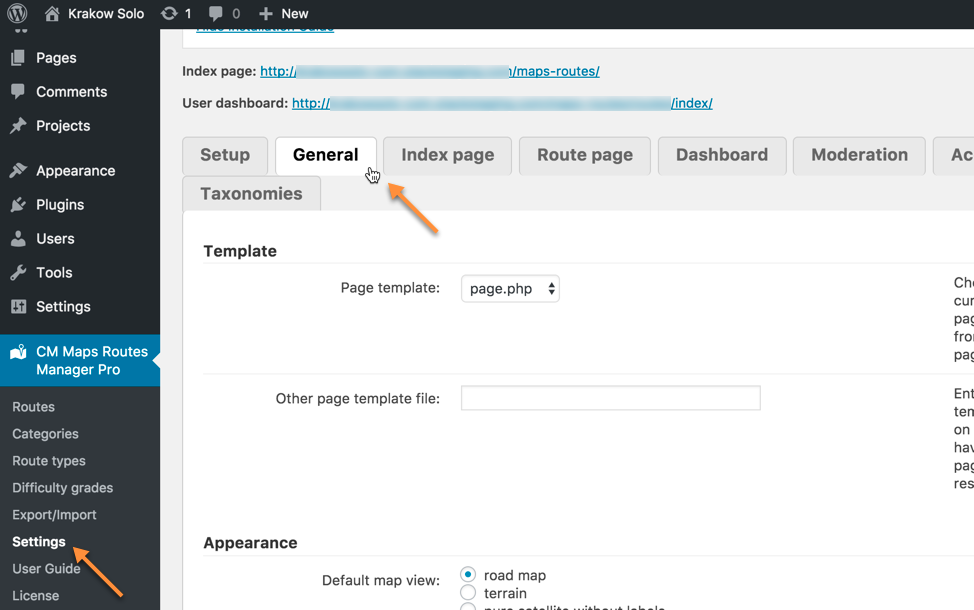
Template
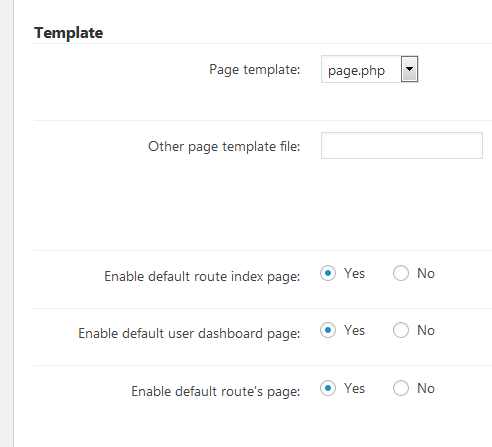
Page template - Choose the page template of the current theme to use on the index page, routes' pages and the front-end user's dashboard pages.
Please choose template "index.php" if you are using Hello Elementor theme.
- Other page template file - Enter the name of the page template if your template is not on the list above. This option will have priority over the selected page template. Leaving it blank resets it.
- Enable default... - If enabled, the default pages will be used despite the theme. You can enable:
- route index page
- user dashboard page
- route page
Appearance
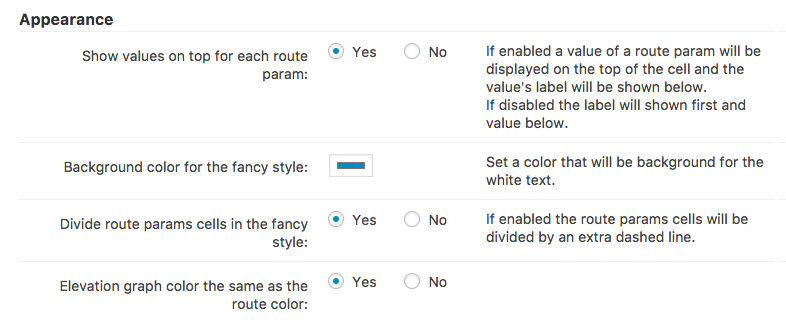
- Show values on top for each route param - Toggles whether to show a route param or the value's label first.
- Background color for the fancy style - Sets the background color for the white text if using "fancy style".
- Divide route params cells in the fancy style - Adds a dashed line between params cells.
- Elevation graph color the same as the route color - If enabled, both features will share the same.
Map
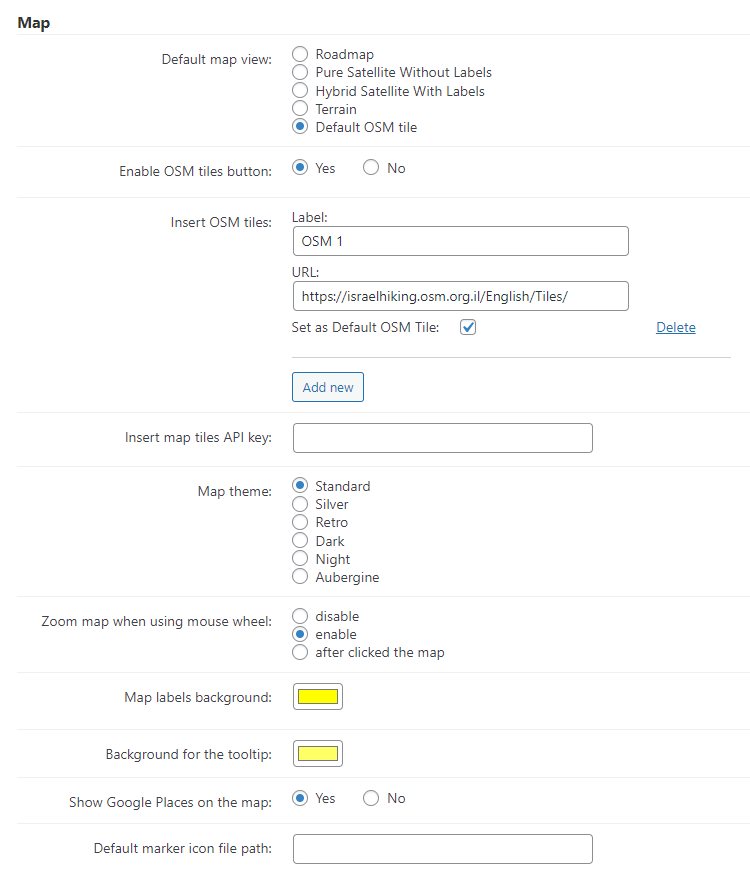
- Default map view - Choose between:
- road map
- terrain
- pure satellite without labels
- hybrid satellite + labels
- Default OSM tile - Learn more
- Enable OSM tiles button - If enabled, the OSM tiles buttons will be displayed on the map and user will be able to switch the tiles on the front-end. Note: this option was introduced in version 4.9.3. Learn more: How To - Add Tiles/Layers To Map
- Insert URL for tile - Add the URL of the tile service of your choice. Check Tiles - OpenStreetMap Wiki for more examples. Note: This option was renewed in the version 4.9.3. You can add up to 6 different OSM tiles. To do this, click the Add new button. You need to add Label and URL in the corresponding fields. You can also set of the OSM tiles as the default one. To remove any of the OSM tiles, click the button Delete. Learn more: How To - Add Tiles/Layers To Map
- Map theme - Choose between Standard, Silver, Retro, Dark, Night and Aubergine. Learn more: How To - Change Map Theme
- Zoom map when using mouse wheel - Configure if the and how the mouse wheel will trigger zooming in or out.
- Map labels background - Click the rectangle to pick the color.
- Background for the tooltip - Click the rectangle to pick the color.
- Show Google Places on the map - Displays places registered in Google Places, such as restaurants, parks, and shops.
- Default marker icon file path - Optionally, set the path of the icon image (for instance, http://www.example.com/icon.png). Leaving the field blank disables the feature
Author
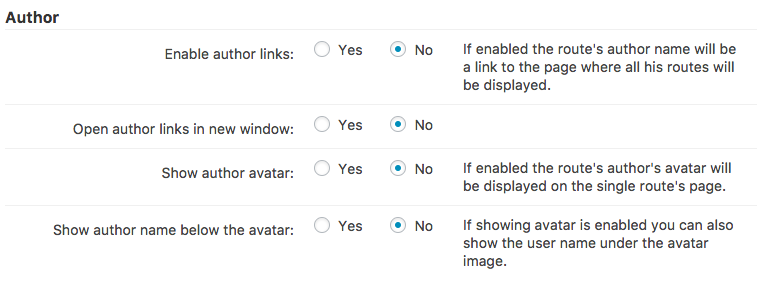
- Enable author links - Adds a link to the author's routes through the route's name.
- Open author link in new window - Toggles whether to open the authors link in the current window or a new one.
- Show author avatar - Toggles whether or not to display the author's avatar on the route page.
- Show author name below the avatar - If showing avatar is enabled, then you can also show the user name under the avatar image.
Units
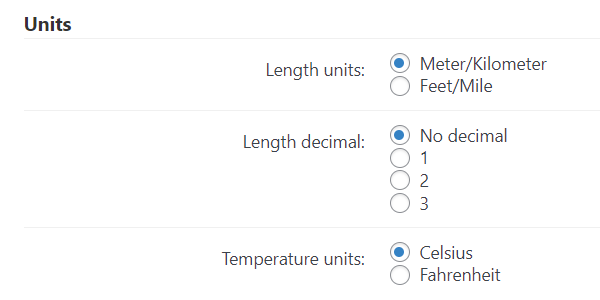
- Length units - Toggles units between meters (Metric System) and feet (Imperial System).
- Length decimal - Allows to set the number of decimal digits for trail's distance. Note: this option was introduced in version 4.9.5.
- Temperature units - Toggles units between Celsius and Fahrenheit.
Geolocation
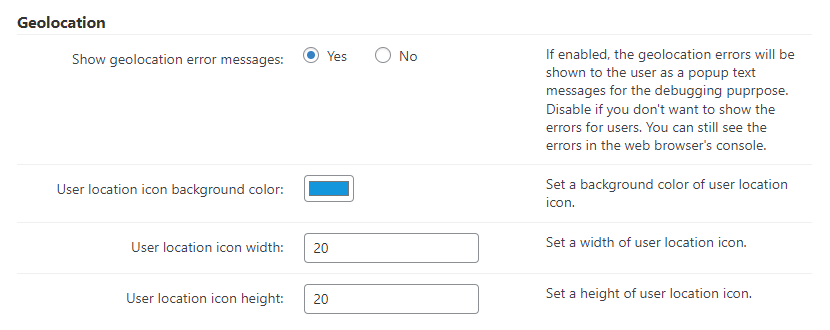
- Show geolocation error messages - This option is useful for debugging. When enabled, any geolocation errors will be shown to the user as a pop-up text message.
- User location icon background color - Set a background color of user location icon. Note: this option was introduced in version 4.9.4.
- Icon width / height - Define the width and height for a user location icon. Note: these options were introduced in version 4.9.4.
Icons
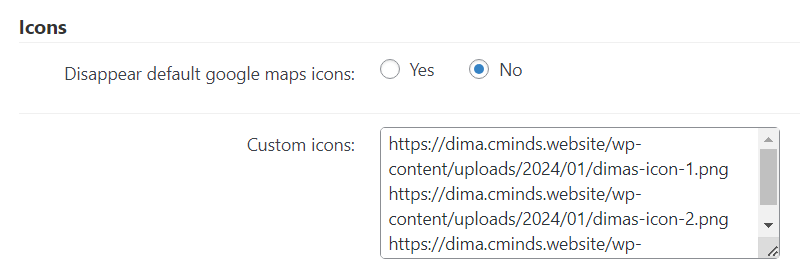
- Disappear default google maps icons - Enable this option to hide standard Google Maps icons from the set of icons when adding locations to the route. Note: this option was introduced in version 5.0.6.
- Custom icons - You can add custom icons. These icons will be available for choosing as location marker icons. Each icon should be placed on a new line.
In this section, you can specify icons that will be available for a route's or location's marker icon. Note: In order for it to work, the option "Enable custom icon per location" in Settings → Route Page must be enabled. Read more about this function.
Enter the Icons' addresses separated by separated lines, as shown:
For example, this 64x64 icon:

Would appear like this in the front-end:

Custom CSS

- Custom CSS - A field to enter optional custom CSS to embed on every page that contains a WordPress Travel Map Plugin interface.
- Look and feel CSS - Additionally, you can set a look and feel CSS file to be loaded.
Link Sharing

Enable share link box - Shows a box with specific URLs ready to be copied and shared

Share link box on the front-end - Share page - Choose the page which has the
[cm-route-index]shortcode with theshowonlybyparams="1"parameter. Learn more
Exclude

- Avada Builder CSS Classes - This setting will help with Avada Builder plugin if content showing duplicate. You can add CSS classes with vertical bar ( | ), for example:
fusion-builder-row-1|fusion-builder-row-2|fusion-builder-row-3
 |
More information about the WordPress Travel Map Plugin Other WordPress products can be found at CreativeMinds WordPress Store |
 |
Let us know how we can Improve this Product Documentation Page To open a Support Ticket visit our support center |

